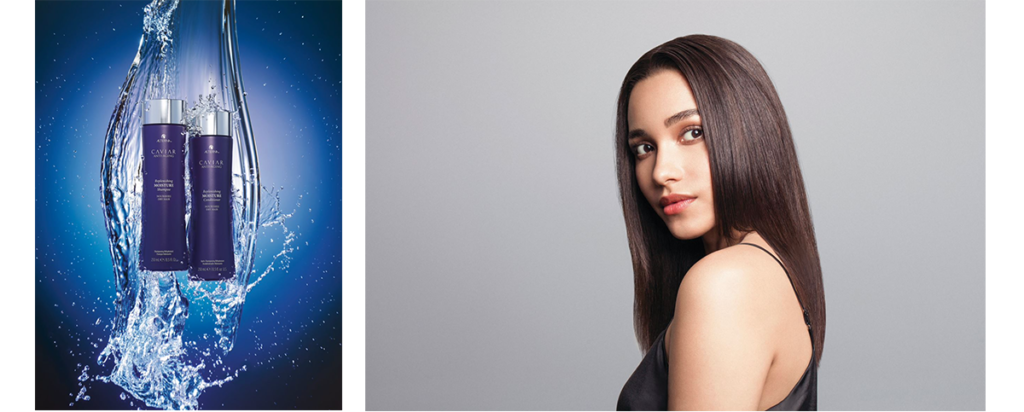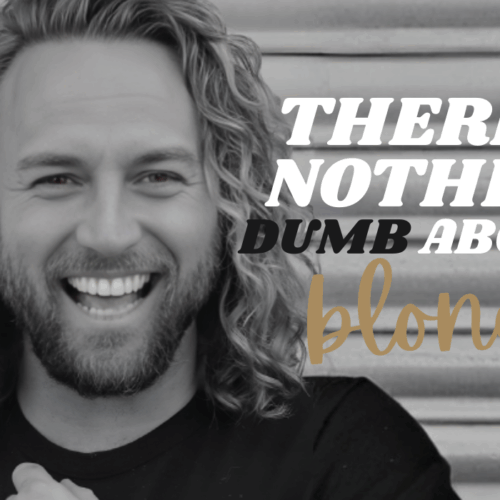From magazine articles to Instagram Reels, there’s more hair care content in our orbit than ever. With this in mind, it’s not only giving us hairdressers mixed messages, but also our clients mixed messages about product benefits and how they should be looking after their hair at home in between salon appointments.
Below, ALTERNA Editorial Director, Joana Neves, shares her input on common hair myths, including the truth about well-known product ingredients and common hair tips we should actually be advising our clients against.
Myth 1: Silicones are bad for hair, full stop
Many of us are made aware that silicones are bad for hair, but that’s not the whole story. The truth is that certain types of silicones are not ideal for certain hair types.
We know that silicones work by attaching to the hair shaft and locking in moisture that the hair craves — this is why we notice seemingly instantaneous shine and softness when using a shampoo, conditioner, or styler with silicones in it. Alterna’s Replenishing Moisture products, for example, incorporate high-quality silicones to help the hair retain luscious moisture (among other benefits, like providing humidity protection).
But, like most things in life, silicones aren’t perfect — while they provide that sleek look and feel, certain types can also weigh hair down (especially curls) and prevent other moisturising ingredients from penetrating into the hair shaft. Over time, continual use of some silicone-based products can also lead to build up, which in turn can lead to annoying issues ranging from itchiness and flakiness to dryness and dullness.
When talking to your clients about using products with silicones at home, make them aware that there are different types and they should try to be aware of which ones they are dealing with in their daily routine. Generally, beauty products may contain silicones and can provide different results. However, Alterna products are formulated with silicones that are water-soluble, very lightweight, and don’t weigh the hair down (examples include dimethicone copolyol, stearoxy dimethicone, and behenoxy dimethicone). Other silicones (like cetyl dimethicone and cyclomethicone) are the ones that will stay in the hair even after rinsing.

Myth 2: Generous hair brushing
One common hair myth and old wives’ tale, is that it’s OK to brush hair 100 times before bed. Hair brushing at night has its benefits, but it’s important to advise clients to not get carried away. Too much brushing can weaken hair strands and cause them to loosen at the root. A light brushing, on the other hand, will help distribute the oils down to the ends of the hair (as opposed to letting them accumulate on the scalp) and release any tangles acquired throughout the day. A good amount of hair brushing to recommend to clients is about 10 to 15 brush strokes before they go to bed.
Be sure to make clients aware that less is more during the day too. Hair brushing frequently through the day tells the hair glands to produce more sebum, which can lead to hair looking and feeling oily, therefore clients should only brush their hair during the day when necessary.
You should also advise clients to use a gentle hair brush at home and not a brush that will pull at the hair and cause friction and damage. One of my favourites is the Manta Hair Anti Breakage Brush, which works to gently glide through the hair and free any knots for minimum breakage.
Myth 3: Hair shouldn’t be washed every day
There is so much out there online and on social media in regards to hair washing and how we should promote that clients take a minimalist approach to hair washing and only wash their hair every other day or even just once a week. However, this is not 100% true, as the best hair washing frequency depends on the client’s hair type, including their hair texture and length.
As a simple guideline, when discussing hair washing with your clients, advise them that when their scalp starts to look greasy, this is when they should wash it. Be sure to always advise clients to use the correct shampoo for their
hair type too. For example, Alterna have a range of collections for all hair types and preferences, including for colour fade, replenishing moisture, volume and bond repair to name a few.
Myth 4: Hair loves hot water
This myth is false, too. Hot water opens up the hair cuticle, allowing moisture to escape and ultimately drying out the hair; it can even encourage the scalp to start producing more oil. Factor in its potential colour fading properties and it’s understandable that prolonged exposure to hot water is not ideal for anyone’s hair.
The solution, in the salon, and to advise clients to do at home, is to switch to a medium or lukewarm water temperature and once hair washing is complete, rinse hair in warm to cool water. If possible, a blast of cold water at the end is great to help close the cuticle, lock in moisture and to help hair appear shinier.
alternahaircare.com






